In today’s fast-paced culinary world, the demand for high-quality, efficient cooking equipment is on the rise. One such essential tool that has gained popularity is the 120V/240V dual voltage sandwich press. This versatile appliance has become a staple in various establishments, from cafes to catering services. Let’s delve into the benefits of investing in a 120V/240V dual voltage sandwich press and explore how it can enhance your business operations.
Introduction to the 120V/240V Dual Voltage Sandwich Press
The 120V/240V dual voltage sandwich press has emerged as a versatile and innovative kitchen appliance, designed to cater to a wide range of culinary needs. This unique appliance is engineered to operate efficiently in different electrical systems, making it an excellent choice for global markets. Let’s delve into the intricacies of this remarkable device.
Crafted with precision, the 120V/240V dual voltage sandwich press is built to withstand the demands of commercial kitchens and home chefs alike. It boasts a robust construction, featuring high-quality materials that ensure durability and longevity. The sleek design not only adds to its aesthetic appeal but also makes it a practical addition to any countertop.
One of the standout features of this sandwich press is its ability to adapt to two different voltage systems. Whether you’re in a country that operates on 120V or 240V, this versatile appliance can seamlessly switch between the two, providing consistent performance in any setting. This dual voltage capability is particularly beneficial for businesses that export their products or for those who travel frequently and need a reliable appliance in various countries.
The sandwich press itself is a marvel of engineering. It typically features a non-stick cooking surface that ensures even heat distribution, resulting in perfectly toasted sandwiches with golden-brown edges. The press is designed with a locking mechanism that securely holds the sandwich in place, allowing for even pressure and precise cooking. The adjustable temperature control allows users to tailor the cooking process to their preference, whether they enjoy their sandwiches crispy or soft.
In the realm of OEM (Original Equipment Manufacturer) production, the 120V/240V dual voltage sandwich press stands out as a sought-after product. OEMs recognize the value of offering a product that can cater to diverse markets without compromising on quality. By manufacturing these presses, OEMs provide their clients with a competitive edge in the global market.
When it comes to the manufacturing process, the 120V/240V dual voltage sandwich press is produced with meticulous attention to detail. The components are sourced from reliable suppliers, and each unit undergoes rigorous quality control checks to ensure that it meets the highest standards. The assembly line is equipped with state-of-the-art machinery to ensure precision and efficiency in the production process.
The versatility of the 120V/240V dual voltage sandwich press is not limited to its voltage adaptability. It also comes with various features that enhance its functionality. For instance, some models include a drip tray to prevent messes and make cleaning easier. Others may have a removable plate for quick and easy maintenance. These thoughtful additions make the sandwich press a convenient and user-friendly appliance.
In terms of applications, the 120V/240V dual voltage sandwich press is a hit in various settings. It’s a staple in cafes and diners, where it’s used to prepare a variety of sandwiches and melts. It’s also a favorite in home kitchens, where it allows for quick and delicious meals without the need for complex appliances. The press’s ability to cook a range of foods, from simple ham and cheese to gourmet creations, makes it a versatile tool for any kitchen.
The importance of quality control in the production of the 120V/240V dual voltage sandwich press cannot be overstated. Ensuring that each unit meets the stringent requirements of the OEM market is crucial. This not only guarantees customer satisfaction but also builds a reputation for the brand. Quality control measures include testing for durability, heat distribution, and safety features to ensure that the final product is reliable and safe for use.
As a testament to its popularity, there are numerous case studies showcasing the success of the 120V/240V dual voltage sandwich press in the OEM market. These stories often highlight the positive impact the product has had on businesses, from increased sales to enhanced customer satisfaction. The press has proven to be a valuable asset for OEMs looking to expand their product lines and meet the demands of a global audience.
In conclusion, the 120V/240V dual voltage sandwich press is a testament to the ingenuity of modern kitchen appliance design. Its ability to adapt to different voltage systems, coupled with its user-friendly features and high-quality construction, makes it an attractive option for OEMs and consumers alike. As the demand for versatile and reliable kitchen appliances continues to grow, the 120V/240V dual voltage sandwich press is poised to remain a staple in the global market.
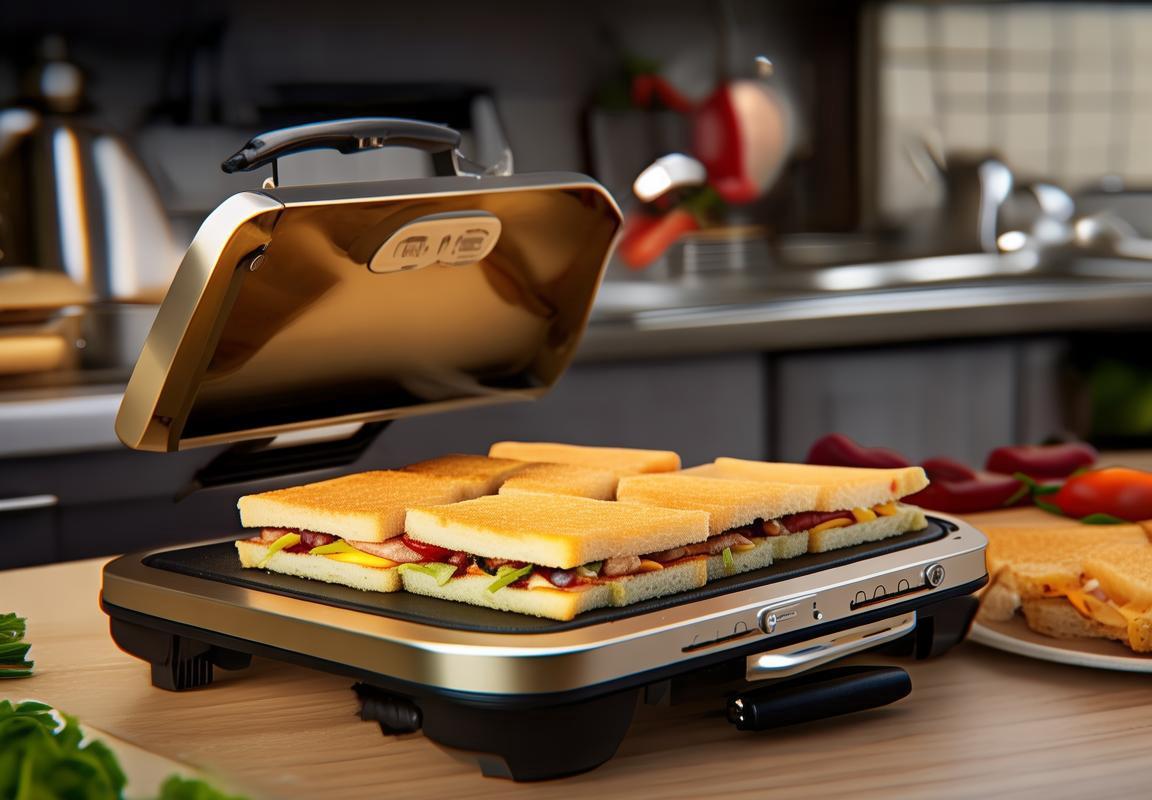
Understanding the OEM Market for Sandwich Presses
In the realm of commercial and industrial cooking equipment, the OEM (Original Equipment Manufacturer) market for sandwich presses has emerged as a pivotal sector. This market is characterized by a unique set of dynamics that cater to the specific needs of businesses looking for customized solutions. Let’s delve into the intricacies of this market.
Manufacturers in the OEM sandwich press market often work closely with clients to tailor their products to specific requirements. This includes customizing the size, shape, and functionalities of the sandwich press to fit a variety of applications, from fast-food chains to gourmet cafes. The ability to offer a bespoke product is a significant draw for businesses that require a unique solution to their food preparation challenges.
One of the standout features of the OEM market is the level of customization it allows. Customers can choose from a range of materials, heat settings, and even add-ons like non-stick coatings or built-in timers. This level of personalization ensures that the final product aligns perfectly with the brand identity and operational needs of the client.
The competition in the OEM sandwich press market is fierce, with numerous manufacturers vying for contracts. This competition drives innovation and quality, as each manufacturer strives to outdo the others in terms of product design, durability, and customer service. As a result, businesses have a wealth of options to choose from when selecting an OEM partner.
Understanding the OEM market also involves recognizing the importance of certifications and compliance. OEM sandwich presses must meet stringent safety and quality standards to be approved for use in various establishments. Manufacturers that can provide certifications such as CE, UL, and NSF are often preferred, as they demonstrate a commitment to excellence and adherence to international standards.
Another key aspect of the OEM market is the concept of scalability. As businesses grow, their needs can change, and they may require a different type of sandwich press or a larger number of units. OEM manufacturers are typically well-equipped to handle such transitions, ensuring that their clients can expand their operations without having to switch suppliers.
The pricing structure within the OEM market for sandwich presses can vary widely. Some manufacturers offer a one-size-fits-all approach, while others provide a more flexible pricing model based on the level of customization and the quantity of units ordered. Businesses must carefully consider their budget and the value they place on customization when negotiating with OEM suppliers.
Supply chain management is also a critical factor in the OEM sandwich press market. Reliable suppliers must be able to deliver components and finished products on time, ensuring that the manufacturing process remains uninterrupted. This aspect is particularly important for businesses with time-sensitive production schedules or peak seasons.
The role of technology in the OEM market cannot be overstated. Advanced software and design tools enable manufacturers to create highly sophisticated sandwich presses with precision and efficiency. Additionally, technology can also facilitate better communication between manufacturers and clients, leading to a more seamless collaboration process.
Marketing strategies play a significant role in the OEM market as well. Manufacturers need to effectively showcase their products to potential clients, emphasizing the unique selling points and benefits of their sandwich presses. This can include everything from informative websites to hands-on demonstrations and trade show participation.
Lastly, the OEM market for sandwich presses is influenced by the broader trends in the foodservice industry. As consumer preferences evolve, so too must the products offered by OEM manufacturers. This means staying abreast of new trends, such as the demand for healthier and more sustainable food options, which can translate into innovative features and designs for sandwich presses.
In summary, the OEM market for sandwich presses is a complex and dynamic industry that requires a nuanced understanding of customer needs, product customization, quality standards, and market trends. By navigating these elements effectively, businesses can secure the right sandwich press solutions to meet their unique demands and drive success in their respective markets.

Key Features of the 120V/240V Dual Voltage Sandwich Press
The 120V/240V dual voltage sandwich press has become a game-changer in the food service industry, offering a versatile solution for various settings. Let’s delve into some of its key features that make it stand out in the market.
-
Dual Voltage Compatibility: One of the standout features of this sandwich press is its dual voltage capability. It can operate seamlessly at 120V and 240V, making it perfect for international use. This adaptability allows businesses to expand their reach globally without worrying about compatibility issues with local power supplies.
-
Sturdy Build Quality: Constructed with high-quality materials, these sandwich presses are designed to withstand heavy use. The robust build ensures durability, longevity, and reliability, making them a worthwhile investment for any commercial kitchen.
-
Even Heat Distribution: The sandwich press is equipped with advanced heating elements that ensure even heat distribution across the entire cooking surface. This evenness guarantees that every sandwich, wrap, or burger is cooked to perfection, with a golden-brown exterior and a meltingly tender interior.
-
Adjustable Temperature Settings: Understanding the diverse needs of different menu items, the press offers a range of temperature settings. This allows users to precisely control the cooking temperature, catering to various types of ingredients and desired outcomes.
-
User-Friendly Interface: Designed with ease of use in mind, the sandwich press features a simple, intuitive control panel. This panel makes it easy to set and adjust temperatures, turn the press on and off, and monitor the cooking process without any complications.
-
Large Cooking Surface: The press boasts a spacious cooking surface that can accommodate a variety of sandwich sizes. This feature is particularly beneficial for high-volume operations, as it allows for multiple items to be cooked at once, increasing efficiency and reducing wait times.
-
Non-Stick Coating: To ensure that sandwiches and other food items release smoothly, the cooking plates are coated with a non-stick material. This not only makes cleaning easier but also reduces the risk of food sticking, preserving the integrity of the final product.
-
Safety Features: Safety is a top priority in commercial kitchen equipment, and this sandwich press does not disappoint. It includes features like an automatic shut-off after a certain period of non-use to prevent overheating and potential fires, as well as a cool-touch exterior to minimize the risk of burns.
-
Easy Maintenance: The sandwich press is designed with maintenance in mind. Its removable cooking plates make cleaning a breeze, and the compact design allows for convenient storage when not in use.
-
Versatility in Menu Offerings: With its ability to cook a wide range of items, from classic burgers and sandwiches to wraps and melts, the 120V/240V dual voltage sandwich press adds versatility to any menu. This versatility can be a significant selling point for restaurants and cafes looking to attract a diverse clientele.
-
Cost-Effective: Despite its advanced features and high-quality construction, the sandwich press offers excellent value for money. Its energy-efficient design ensures that it operates without breaking the bank, while still providing exceptional performance.
-
Brand Reputation: The fact that reputable brands offer this type of sandwich press is a testament to its quality and reliability. When you invest in a sandwich press from a trusted manufacturer, you can be confident that you’re getting a product that has been rigorously tested and approved.
-
Customization Options: Some models of the 120V/240V dual voltage sandwich press offer customization options, such as different colors, additional features, or even branding. This allows businesses to tailor their equipment to their specific needs and branding strategy.
-
Warranty and Support: A reliable manufacturer will provide a comprehensive warranty and excellent customer support. This means that in the unlikely event of a problem, you can expect prompt assistance and a commitment to resolving any issues that may arise.
By focusing on these key features, the 120V/240V dual voltage sandwich press has solidified its position as a must-have piece of equipment for any commercial kitchen. Its combination of versatility, durability, and ease of use makes it an invaluable asset for operators looking to enhance their menu offerings and customer satisfaction.
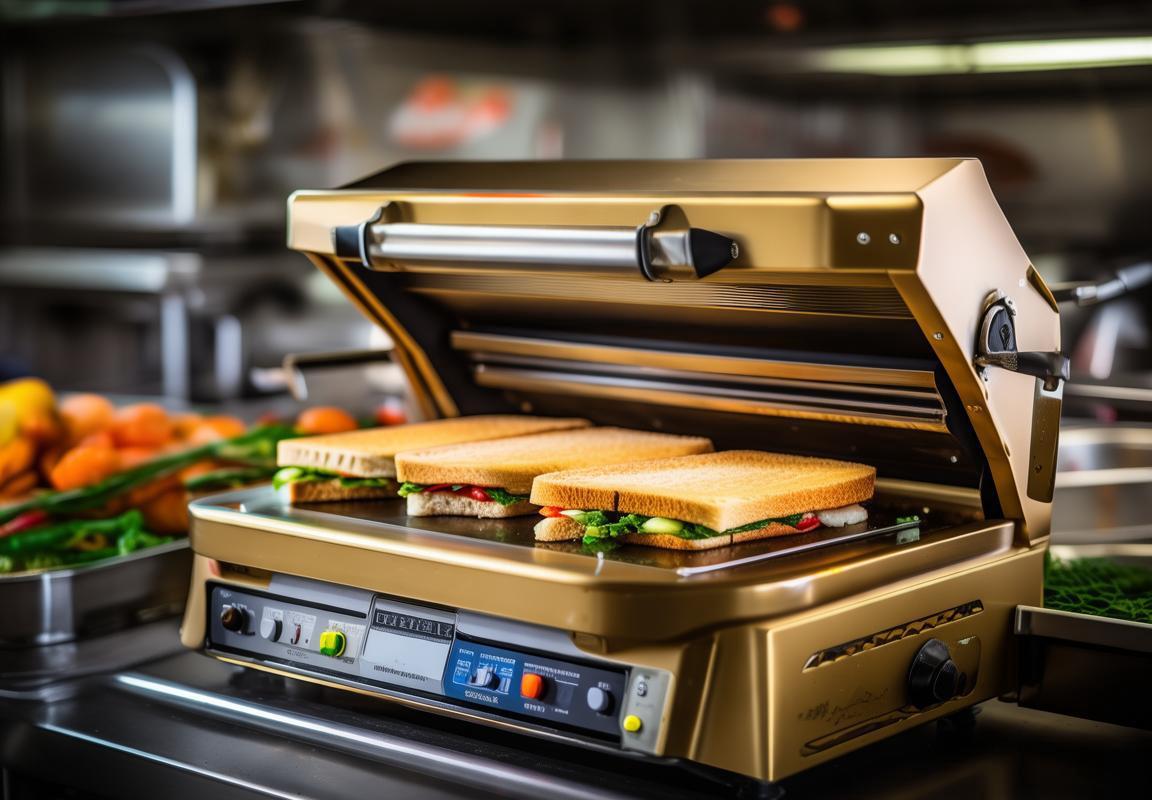
Advantages of Choosing an OEM Sandwich Press
The decision to opt for an OEM (Original Equipment Manufacturer) sandwich press can be a game-changer for businesses in the foodservice industry. Here are several advantages that come with choosing an OEM sandwich press:
Customization for Specific NeedsOEM sandwich presses offer a level of customization that standard models cannot match. Whether it’s adjusting the size of the sandwiches, the pressure applied, or the heating elements, these presses can be tailored to fit the unique requirements of your business. This ensures that your sandwich press not only meets your current needs but can also evolve with your menu and customer preferences.
Enhanced Brand IdentityWhen you choose an OEM sandwich press, you’re not just buying a piece of equipment; you’re investing in a tool that can enhance your brand’s identity. These presses can be designed with your company logo, colors, and even specific features that reflect your brand’s values. This level of branding can make your food stand out and create a memorable customer experience.
Quality Control and ReliabilityWorking with an OEM means that you have a direct line to the manufacturer for quality control. Since the press is designed and built to your specifications, there’s a higher level of assurance that it will be reliable and durable. This can lead to fewer breakdowns, less downtime, and ultimately, a better return on investment.
Efficiency in ProductionOEM sandwich presses are often designed with efficiency in mind. From the placement of controls to the flow of the sandwich through the press, these machines can be optimized to reduce waste and increase throughput. This is particularly beneficial for high-volume operations where time and efficiency are critical.
Cost-Effective SolutionsWhile the initial cost of an OEM sandwich press may be higher than that of a standard model, the long-term benefits can often outweigh the initial investment. With better efficiency and durability, these presses can reduce maintenance costs and the need for frequent replacements. Additionally, the ability to customize the press to your specific needs can prevent overpaying for features you won’t use.
Innovation and Technology IntegrationOEM manufacturers are often at the forefront of technological advancements. When you choose an OEM sandwich press, you gain access to the latest innovations in heating elements, temperature control, and pressure settings. This means your business can offer a higher quality product with cutting-edge technology.
Scalability and GrowthAs your business grows, your equipment needs may change. An OEM sandwich press can be designed to scale with your operations. Whether you’re expanding your menu or increasing your production capacity, these presses can be adapted to handle the increased demand without compromising on quality.
SustainabilityWith the growing emphasis on sustainability, OEM sandwich presses can be designed with eco-friendly materials and energy-efficient features. This not only aligns with the values of environmentally conscious consumers but can also reduce your operational costs over time.
Support and ServiceWhen you go with an OEM, you’re not just getting a product; you’re also gaining access to a manufacturer’s support and service. This means regular maintenance, technical assistance, and the ability to source replacement parts quickly. This level of support can be crucial in maintaining the performance and longevity of your sandwich press.
Competitive EdgeIn a crowded market, having a unique and high-quality sandwich press can give you a competitive edge. It’s not just about the press itself but also about the perception it creates among your customers. A well-designed, reliable OEM sandwich press can help differentiate your business and attract more customers.
Long-Term PartnershipsChoosing an OEM sandwich press often leads to the development of a long-term partnership with the manufacturer. This can provide ongoing benefits such as exclusive deals, early access to new products, and a dedicated point of contact for all your equipment needs.
In summary, the advantages of choosing an OEM sandwich press are numerous, from customization and brand enhancement to quality control and cost-effectiveness. These benefits can contribute to a more efficient, sustainable, and successful operation in the foodservice industry.
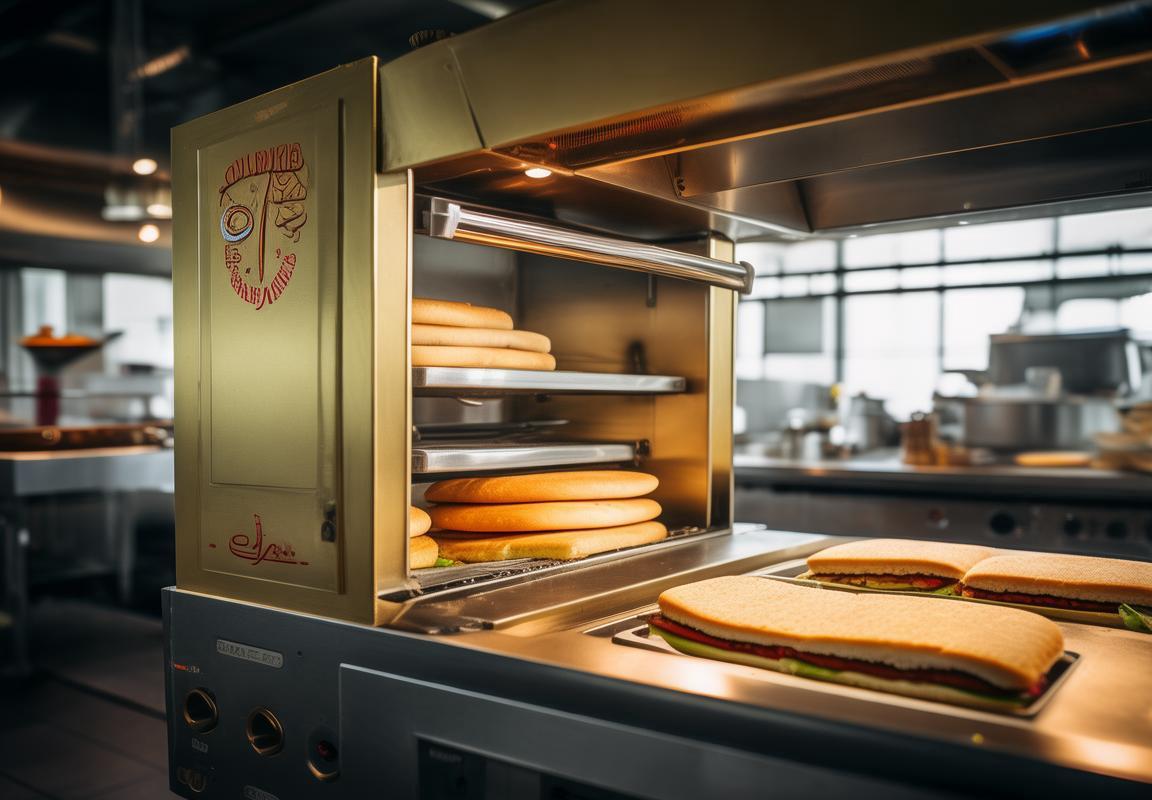
The Process of Working with an OEM Sandwich Press Manufacturer
Navigating the collaboration with an OEM sandwich press manufacturer involves several key steps and considerations to ensure a successful partnership. Here’s a detailed look at the process:
The Initial Inquiry and ResearchUnderstanding the needs of your business is crucial before diving into a partnership with an OEM sandwich press manufacturer. This involves researching various manufacturers, comparing their capabilities, and assessing their reputation within the industry. It’s important to look for companies with a history of producing high-quality sandwich presses that meet the specific requirements of your product line.
Establishing Communication ChannelsOnce you’ve identified potential OEM sandwich press manufacturers, establishing clear communication channels is vital. This includes not only direct communication with the sales or business development team but also setting up a system for ongoing dialogue with engineers, quality assurance staff, and production managers. Effective communication ensures that your expectations and the manufacturer’s capabilities are aligned from the outset.
Defining Technical SpecificationsThe technical specifications of the sandwich press are a cornerstone of the OEM process. This involves a detailed discussion to outline the exact dimensions, materials, power requirements (such as the 120V/240V dual voltage feature), heating elements, and any other unique features or functionalities your product requires. This stage often includes prototypes and iterative design changes to fine-tune the press to your exact specifications.
Negotiating Terms and ConditionsOnce the technical details are settled, the negotiation of terms and conditions begins. This includes pricing, delivery schedules, quality control measures, intellectual property rights, and any other legal aspects of the agreement. It’s crucial to ensure that the OEM manufacturer’s terms are favorable and that they provide a clear path for quality assurance and after-sales support.
Quality Control and AssuranceQuality control is a non-negotiable aspect when working with an OEM sandwich press manufacturer. This involves setting up a robust quality control process that may include regular audits, certifications, and adherence to international standards. It’s essential to understand how the manufacturer ensures that each press meets your specifications and maintains consistent quality throughout the production run.
Customization and BrandingOne of the advantages of working with an OEM manufacturer is the ability to customize the sandwich press to align with your brand. This can include customizing the appearance, adding your logo, or incorporating specific design elements that differentiate your product in the market. The manufacturer should be able to provide detailed information on the customization options and the implications on cost and lead times.
Pilot Production and TestingBefore moving into full-scale production, a pilot run is typically conducted. This allows you to test the final product and ensure that it meets all the agreed-upon specifications. During this phase, any necessary adjustments can be made, and feedback can be provided to the manufacturer for further refinements.
Ongoing Collaboration and SupportOnce production begins, ongoing collaboration with the OEM manufacturer is key. This includes regular updates on production status, addressing any issues that arise, and maintaining open lines of communication. The manufacturer should also be available for technical support and should be willing to work with you to resolve any problems that may arise with the sandwich presses post-production.
Supply Chain ManagementEffective supply chain management is crucial for the success of an OEM partnership. This involves coordinating the logistics of shipping, inventory management, and ensuring that production can scale up or down as needed to meet market demand. The manufacturer should be able to provide a clear supply chain strategy that aligns with your business goals.
Conclusion of the AgreementFinally, the agreement with the OEM sandwich press manufacturer should be concluded with a formal contract that outlines all the terms and conditions. This contract should be reviewed by legal counsel to ensure that all aspects of the partnership are covered and that there are no ambiguities in the agreement.
Throughout this process, maintaining a collaborative and transparent relationship with the OEM manufacturer is essential. This ensures that the sandwich press produced not only meets your technical specifications but also aligns with your brand identity and business objectives.
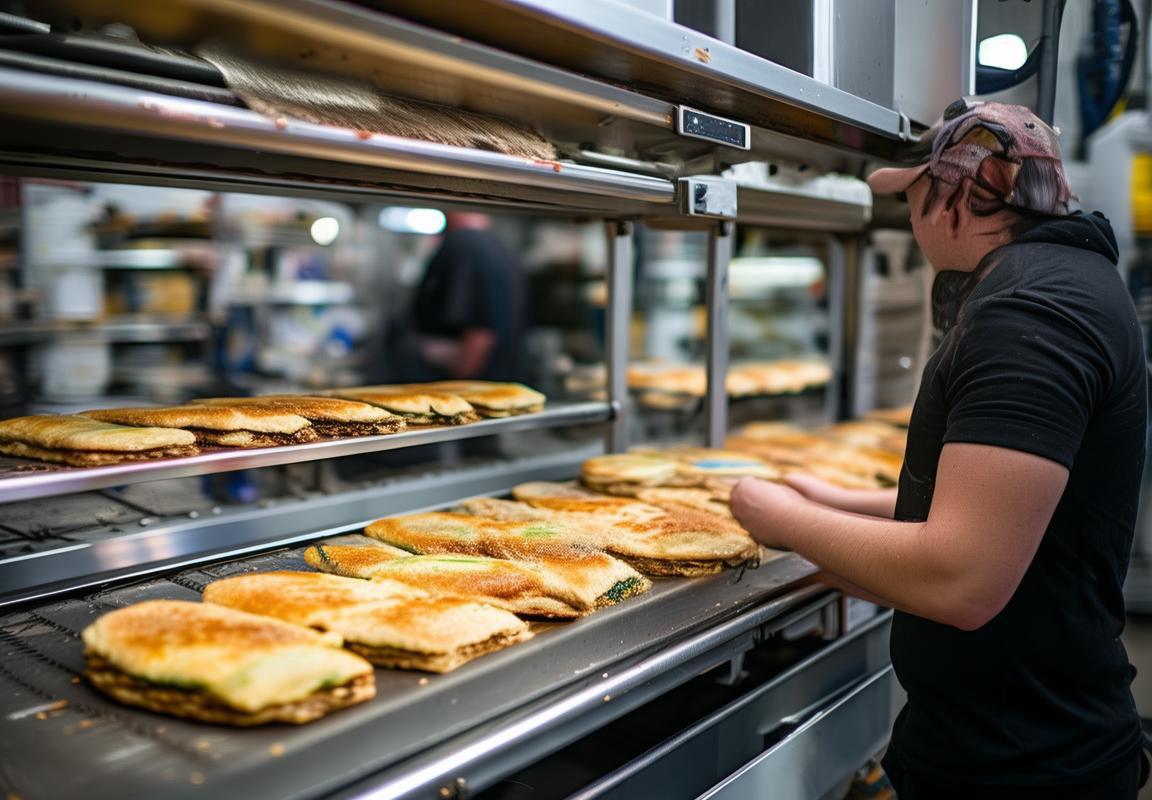
How the 120V/240V Dual Voltage Feature Enhances Versatility
In today’s fast-paced and diverse market, the ability to cater to a wide range of customers is crucial. The 120V/240V dual voltage feature in sandwich presses is a game-changer that significantly enhances versatility. Here’s how it does just that:
Adapting to Global StandardsThe dual voltage capability allows sandwich presses to be used across various regions without the need for additional transformers or voltage conversion devices. This means that whether you’re operating in countries where the standard voltage is 120V or 240V, the same machine can be safely and effectively utilized, simplifying logistics and reducing costs for businesses with a global presence.
Customization for Different MarketsDifferent regions may have unique preferences or requirements when it comes to sandwich preparation. With a dual voltage sandwich press, manufacturers can customize their products to cater to these specific needs. For instance, certain countries might prefer thicker sandwiches, which could be achieved by adjusting the pressure settings on a dual voltage model. This flexibility in customization can be a major draw for both B2B and B2C markets.
Reducing Inventory and Storage CostsCarrying multiple versions of a product for different voltage standards can be costly and inefficient. By offering a dual voltage sandwich press, manufacturers can streamline their inventory and reduce storage costs. This not only optimizes their supply chain but also allows for easier management of product variations, as there’s no need to maintain separate stocks for each voltage type.
Ease of Use and MaintenanceThe dual voltage feature is not just about compatibility; it also makes the sandwich press more user-friendly. Operators can easily switch between voltage settings, ensuring consistent performance without the risk of damaging the equipment. Moreover, with fewer specialized parts required for different voltage regions, maintenance becomes simpler and less costly.
Energy EfficiencyIn regions where energy costs are a significant concern, the dual voltage sandwich press offers a cost-effective solution. Operators can choose the voltage that best suits their local grid conditions, potentially reducing energy consumption and lowering their operational costs over time.
Market Expansion OpportunitiesFor companies looking to expand their market reach, the dual voltage feature can be a key differentiator. It allows them to tap into new markets without the need for significant redesigns or retooling. This can be particularly beneficial for startups or small businesses that want to grow but may not have the resources to develop multiple product lines.
Enhanced Customer SatisfactionUltimately, the versatility of the 120V/240V dual voltage sandwich press translates into higher customer satisfaction. By providing a product that is both versatile and reliable, manufacturers can meet the demands of a broader customer base, leading to increased sales and repeat business.
Global Travel and Temporary UseFor those in the food service industry who travel or work in various countries, the dual voltage capability is invaluable. They can bring their sandwich press with them, knowing it will function without issue, regardless of the local electrical standards. This is especially important for events, pop-up shops, or temporary locations where a reliable and adaptable kitchen equipment is essential.
Environmental ImpactBy reducing the need for multiple versions of the same product, the dual voltage sandwich press contributes to a smaller environmental footprint. Less packaging, less shipping, and fewer parts means less waste and a more sustainable approach to product design.
ConclusionThe 120V/240V dual voltage feature in sandwich presses is more than just a technical specification; it’s a strategic advantage that can lead to a variety of benefits. From cost savings and market expansion to enhanced customer satisfaction and environmental responsibility, the versatility offered by this feature is a significant factor in the success of any sandwich press manufacturer.
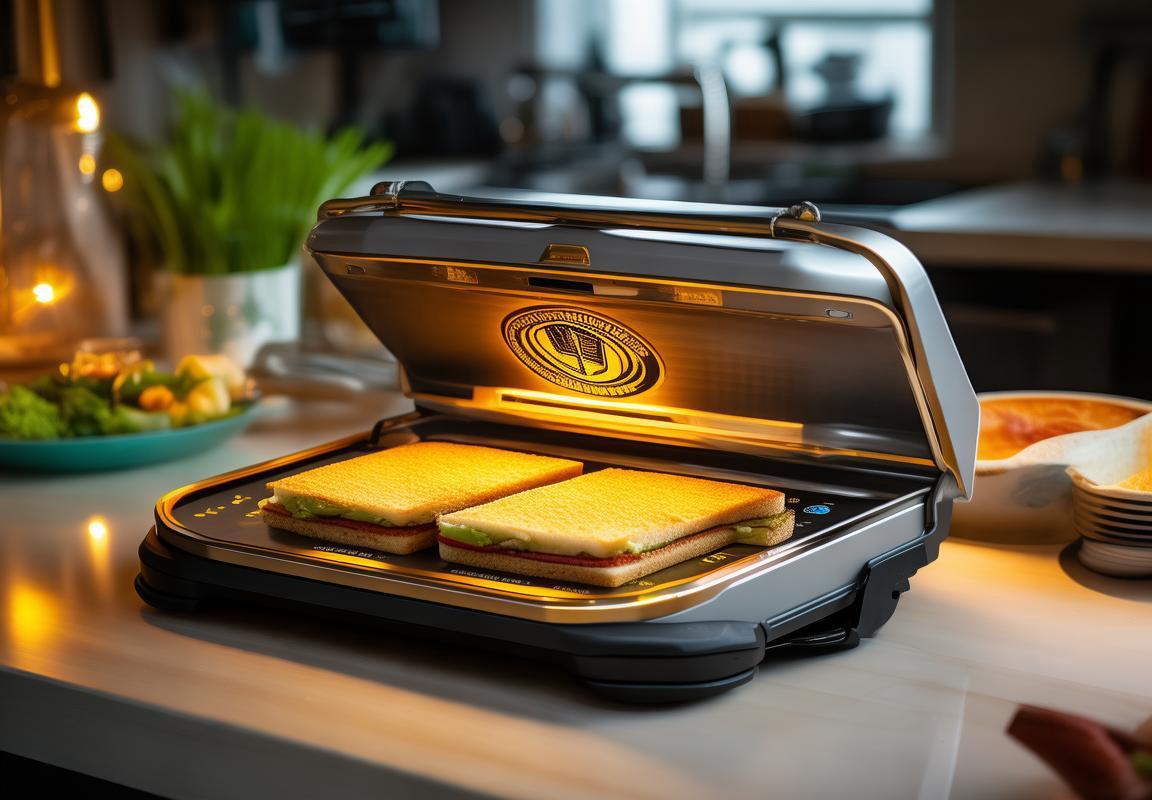
Common Applications for 120V/240V Dual Voltage Sandwich Presses
In the world of commercial and industrial foodservice, the 120V/240V dual voltage sandwich press has become a versatile tool that can cater to a wide range of applications. Here are some of the common uses for these versatile appliances:
In bustling cafes and diners, sandwich presses are a staple for creating delicious, toasted sandwiches on the spot. Their ability to handle both standard and high-voltage power sources ensures consistent performance regardless of the location’s electrical infrastructure.
Restaurants that offer a variety of menu items, from classic burgers to gourmet melts, rely on dual voltage sandwich presses to accommodate different types of bread and filling combinations. The adjustable heat settings allow for precise control over the level of crispness and doneness.
Mobile food vendors and food trucks often find the portability and dual voltage capability of these presses invaluable. They can operate their sandwich presses with ease in various settings, from outdoor festivals to busy city streets, without worrying about compatibility issues.
Caterers and event planners appreciate the convenience of having a reliable sandwich press that can be easily transported and set up at any venue. The dual voltage feature ensures that their equipment works seamlessly in different countries or regions with varying electrical standards.
In educational environments, such as culinary schools and vocational training centers, dual voltage sandwich presses are used to teach students about the art of sandwich preparation. These presses offer a practical and hands-on learning experience that can be easily integrated into various cooking classes.
Health-conscious consumers are increasingly seeking out quick, nutritious meals, and sandwich shops and delis are responding by offering fresh, made-to-order sandwiches. The dual voltage presses allow these establishments to serve up a variety of toasted sandwiches, wraps, and paninis to satisfy diverse dietary preferences.
Fast-casual restaurants that pride themselves on speed and efficiency use dual voltage sandwich presses to streamline their service. These appliances can quickly cook multiple sandwiches at once, ensuring that customers receive their orders promptly without sacrificing quality.
In food service establishments that require a high volume of sandwiches, such as sports arenas or concert venues, dual voltage sandwich presses are essential. They can handle the demand without compromising on the quality of the final product.
For those who enjoy hosting dinner parties or special events at home, a dual voltage sandwich press is a valuable addition to the kitchen. It allows hosts to prepare a variety of sandwiches for guests, from simple ham and cheese to more complex gourmet creations.
In the retail sector, sandwich presses can be found in convenience stores and grocery markets. They offer a quick and convenient way for customers to grab a freshly toasted sandwich or a warm, homemade-style sandwich to go.
Finally, in the global market, dual voltage sandwich presses are a smart choice for manufacturers looking to export their products. By being compatible with both 120V and 240V systems, these presses can be sold to a broader customer base, reducing the need for customization and increasing market reach.
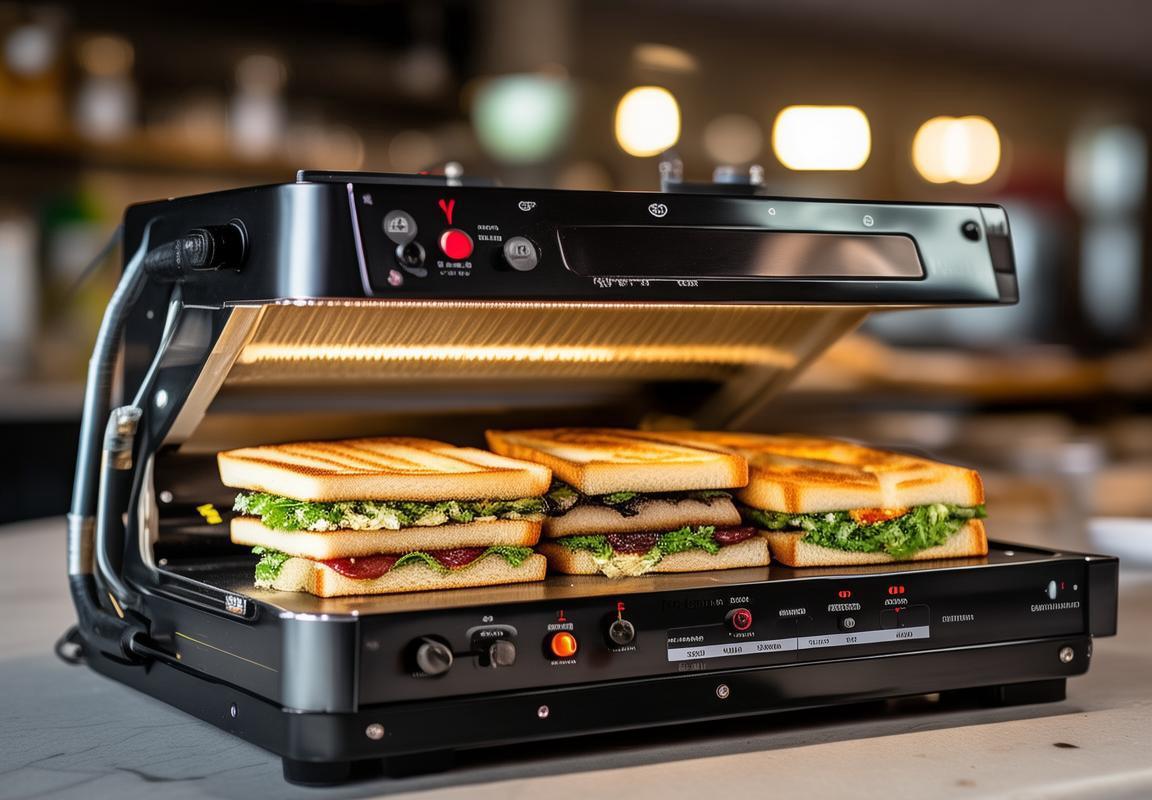
The Importance of Quality Control in OEM Sandwich Press Production
In the world of OEM sandwich press production, the importance of quality control cannot be overstated. Ensuring that each press meets the highest standards is crucial for maintaining a reputation for excellence and delivering products that exceed customer expectations. Here’s how quality control shapes the production process:
Precision Engineering: The foundation of a high-quality sandwich press lies in precision engineering. Every component must be manufactured to exact specifications, ensuring that the press operates smoothly and consistently. Quality control involves rigorous checks at each stage of the manufacturing process, from the raw materials to the final assembly.
Material Selection: The choice of materials is critical in determining the durability and performance of the sandwich press. Quality control teams meticulously inspect materials for quality, ensuring that they meet the required standards for strength, heat resistance, and longevity. This attention to material selection prevents issues like warping, corrosion, or premature wear.
Thermal Management: For sandwich presses that require precise temperature control, thermal management is a key aspect of quality control. Regular testing of the heating elements, insulation, and temperature sensors ensures that the press maintains consistent and accurate temperatures, which is essential for achieving the desired cooking results.
Safety Standards: Safety is paramount in any manufacturing process, and sandwich presses are no exception. Quality control protocols include thorough inspections of all safety features, such as emergency shut-offs, temperature limits, and non-slip surfaces. Ensuring these safety measures are in place is vital for preventing accidents and protecting users.
Functionality Testing: Before a sandwich press leaves the factory, it must undergo rigorous functionality testing. This includes testing the press’s ability to evenly distribute pressure, its consistency in cooking temperatures, and its ability to handle different types of bread and fillings. These tests are crucial for verifying that the press will perform as expected in real-world conditions.
Durability Assessments: The longevity of a sandwich press is a significant factor in its appeal to customers. Quality control involves stress tests and longevity assessments to ensure that the press can withstand repeated use without compromising its performance. This includes examining the resilience of hinges, the integrity of the frame, and the robustness of electrical components.
Customization Verification: Many OEM sandwich press manufacturers offer customization services to cater to specific customer needs. Quality control here involves verifying that every customized aspect, from the size and shape of the press to the specific features requested, is accurately implemented and meets the customer’s specifications.
Documentation and Traceability: Maintaining comprehensive documentation is essential for quality control. Each sandwich press is tracked through the production process, and detailed records are kept of every inspection and test. This traceability ensures that any issues can be quickly identified and addressed, and it provides a clear audit trail for regulatory compliance.
Customer Feedback Loop: The quality control process doesn’t end with the delivery of the sandwich press. Gathering customer feedback is an integral part of the process, as it provides valuable insights into how the press is performing in the field. This feedback loop allows for continuous improvement and ensures that the OEM manufacturer is always striving to meet and exceed customer expectations.
In conclusion, the importance of quality control in OEM sandwich press production cannot be overstated. It ensures that each press is a testament to precision, safety, and reliability. By meticulously inspecting every aspect of the manufacturing process, from material selection to functionality testing, OEM manufacturers can deliver products that not only meet but exceed the stringent demands of the market.
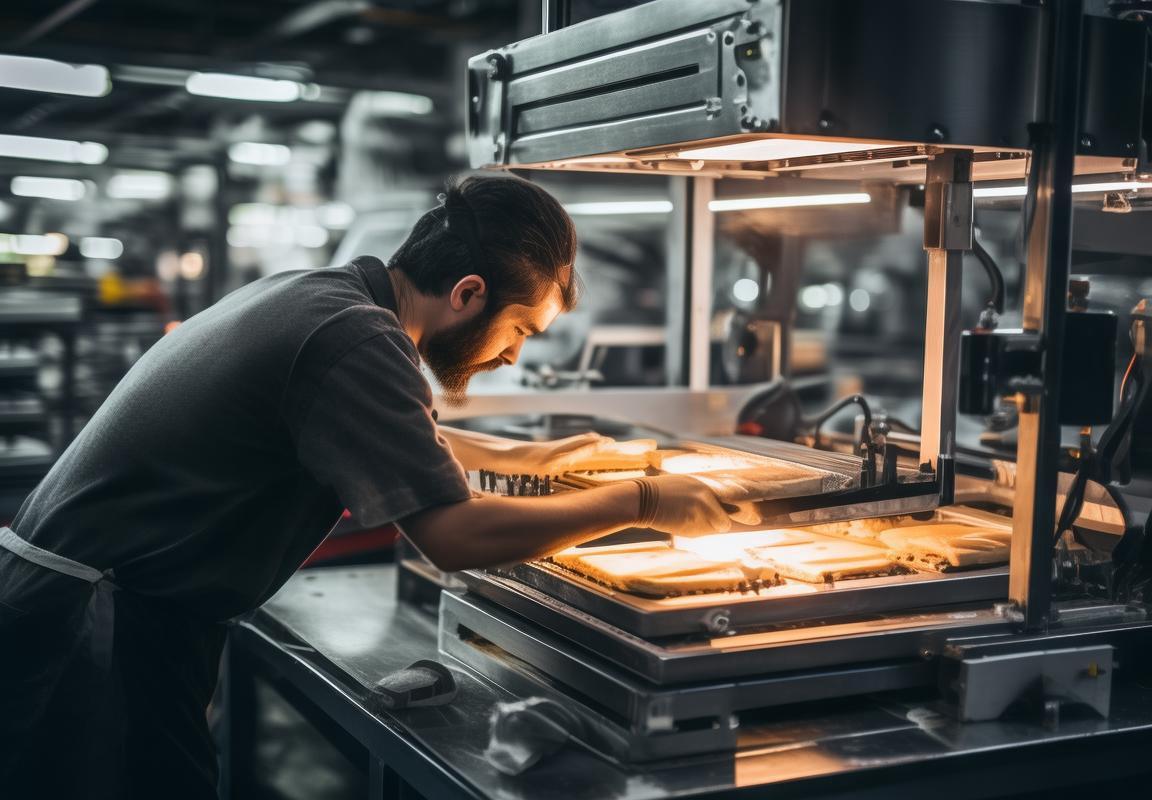
Case Studies: Success Stories with 120V/240V Dual Voltage Sandwich Press OEMs
In the realm of sandwich press manufacturing, OEMs (Original Equipment Manufacturers) have a knack for crafting machines that cater to a variety of needs. Here are a few success stories that showcase the impact of 120V/240V dual voltage sandwich presses in different industries.
-
The Bakery Revolution: One of the most prominent success stories involves a bakery that expanded its offerings by incorporating a dual voltage sandwich press into their kitchen. This allowed them to bake a wider range of breads, from artisanal loaves to sandwich rolls, all with a consistent and professional finish. The flexibility of the dual voltage option meant they could serve both local and international customers without worrying about compatibility issues.
-
Mobile Catering Services: A mobile catering company found that the versatility of a 120V/240V dual voltage sandwich press was a game-changer. With their trucks equipped with these presses, they could easily transition from one event to another, regardless of whether they were at a venue with standard American voltage or European outlets. This adaptability ensured they could serve their diverse clientele without any delay or compromise in quality.
-
Commercial Kitchens: In commercial kitchens where speed and efficiency are paramount, a 120V/240V dual voltage sandwich press has proven to be an invaluable asset. Kitchens that serve fast-casual or quick-service restaurants have seen an increase in productivity as these presses can handle high volumes of orders. The ability to switch between voltages has allowed these establishments to operate smoothly without the need for voltage converters or additional equipment.
-
Health and Wellness Focused Businesses: For businesses focusing on health and wellness, offering fresh, homemade sandwiches is crucial. The dual voltage sandwich press has allowed these companies to create on-the-go meals that cater to customers’ health-conscious preferences. The consistency and quality of the sandwiches have not only increased customer satisfaction but have also helped in building a reputation for high-quality, nutritious food options.
-
Cafes and Coffee Shops: The inclusion of a dual voltage sandwich press in cafes and coffee shops has been a strategic move to enhance the menu variety. These establishments have found that offering sandwiches alongside their coffee and tea can significantly boost sales. The versatility of the press to work with different voltage systems means that these businesses can cater to a broader market without any constraints.
-
Travel and Hospitality: In the travel and hospitality industry, the dual voltage sandwich press has been a lifesaver for on-site food preparation. Hotels, motels, and campgrounds that offer breakfast or light meals to guests have benefited from the convenience of these presses. They can now prepare a variety of sandwiches and other items that require even heat and pressure, ensuring that guests receive a high-quality meal experience.
-
Food Trucks and Mobile Vendors: For food trucks and mobile vendors, space is at a premium, and the dual voltage sandwich press has been a compact yet powerful solution. These portable presses have allowed vendors to offer a range of sandwiches and other baked goods that have become a staple in their menus, attracting both regular and new customers.
-
Customization and Special Orders: The ability to customize sandwiches has opened up new avenues for businesses. Customization can range from simple changes like adding or removing fillings to creating entirely new sandwich concepts. The dual voltage press has made it easier for these businesses to accommodate special orders, enhancing their service and customer loyalty.
-
Competitive Edge: For manufacturers and suppliers, the inclusion of a dual voltage sandwich press in their product line has given them a competitive edge. It allows them to offer a more comprehensive solution to potential clients, ensuring that their products can be used globally without any issues.
These success stories are just a glimpse into the many ways in which 120V/240V dual voltage sandwich presses have made a significant impact on businesses across various industries. The adaptability and quality they bring to the table continue to be a driving force behind their popularity.
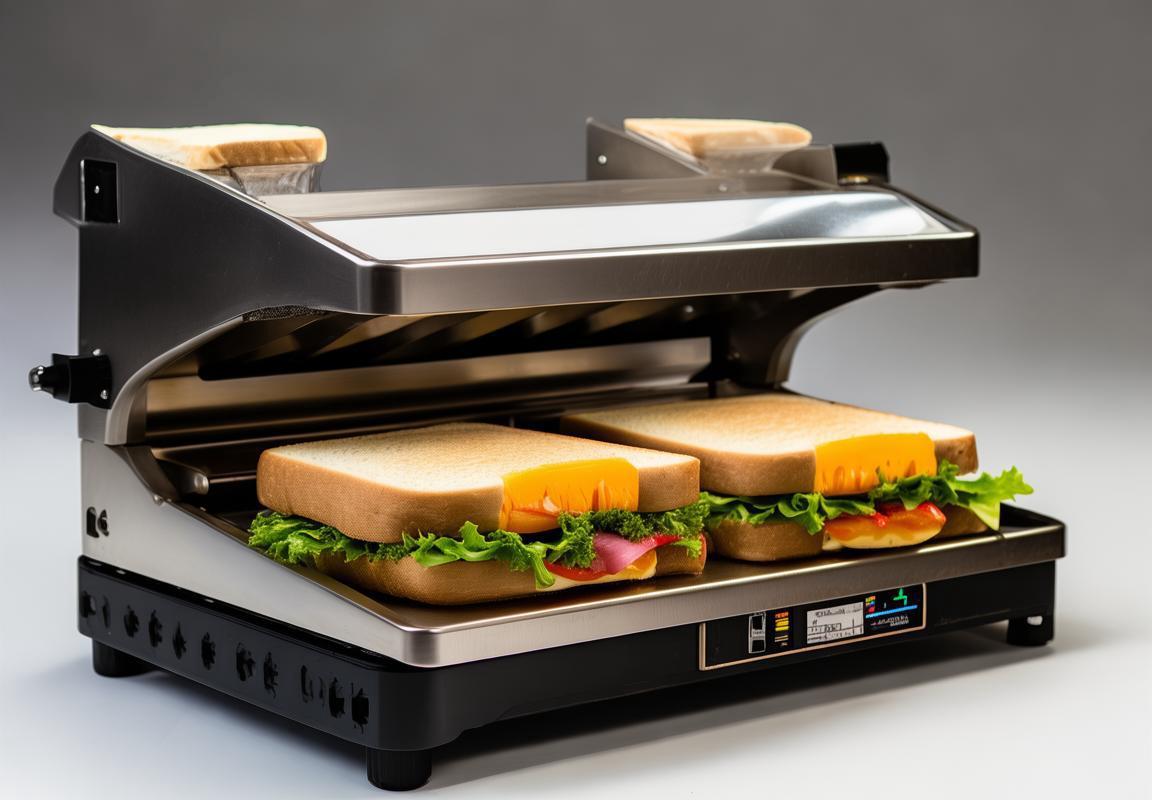
Conclusion: Why the 120V/240V Dual Voltage Sandwich Press is a Smart Investment
The 120V/240V dual voltage sandwich press has emerged as a smart investment for businesses looking to cater to diverse markets and ensure flexibility in their operations. This innovative appliance not only provides the convenience of operating in two different voltage systems but also offers a range of other advantages that make it a wise choice for various industries. Here’s a deeper look into why this dual voltage feature stands out as a smart investment.
In today’s global marketplace, businesses are often required to adapt to different voltage standards across countries and regions. The 120V/240V dual voltage sandwich press addresses this challenge by allowing users to switch between two voltage settings effortlessly. This feature eliminates the need for separate appliances or transformers, saving space and reducing costs.
One of the most significant benefits of the dual voltage capability is the ability to reach a broader customer base. For instance, food service providers, such as cafes and restaurants, can cater to both residential and commercial customers without the hassle of having multiple machines. This versatility also makes the sandwich press ideal for international trade, where compliance with various voltage regulations is crucial.
The dual voltage feature also ensures that the sandwich press operates consistently at optimal performance regardless of the voltage input. This consistency is essential for maintaining product quality and customer satisfaction. By eliminating the risk of performance fluctuations due to voltage instability, businesses can rely on the sandwich press to deliver reliable results time and time again.
In terms of energy efficiency, the 120V/240V dual voltage sandwich press is a step ahead of its single-voltage counterparts. The ability to adjust to the specific voltage requirements of the electrical system can lead to lower energy consumption, reducing utility bills and promoting sustainability. This eco-friendly aspect is increasingly important to consumers and businesses alike.
The design of the 120V/240V dual voltage sandwich press is another factor that makes it a smart investment. These machines are often built with durable materials and cutting-edge technology, ensuring a long lifespan and minimal maintenance requirements. This means businesses can save on the costs associated with frequent repairs or replacements.
When it comes to customization, the OEM (Original Equipment Manufacturer) aspect of the sandwich press is a game-changer. Businesses can choose to have the sandwich press tailored to their specific needs, whether it’s a particular size, additional features, or branding. This level of customization not only sets the product apart from competitors but also aligns with the unique requirements of the business or end-user.
In the world of foodservice, the 120V/240V dual voltage sandwich press has found its way into various applications. From quick-service restaurants to gourmet cafes, these machines are used to create everything from classic grilled cheese sandwiches to elaborate gourmet dishes. The versatility of the dual voltage feature means that these presses can handle a wide range of recipes, from high-heat cooking to gentle warming.
Moreover, the compact and space-saving design of the dual voltage sandwich press makes it a practical choice for businesses with limited kitchen space. It can be easily integrated into existing setups or used as a standalone unit in food trucks, catering services, and even in home kitchens for those who love to entertain.
For businesses looking to enhance their product offerings, the 120V/240V dual voltage sandwich press is a cost-effective solution. It eliminates the need for additional equipment and training, as the same machine can perform multiple tasks. This not only streamlines operations but also reduces the complexity of inventory management.
Success stories with 120V/240V dual voltage sandwich press OEMs are abundant. Companies that have invested in these presses have seen an increase in productivity and efficiency. For example, a small café that upgraded to a dual voltage sandwich press noticed a significant boost in customer satisfaction and sales, as the machine allowed them to offer a wider variety of sandwiches.
In the realm of innovation, the 120V/240V dual voltage sandwich press has set a new standard. It’s not just a machine that presses sandwiches; it’s a tool that empowers businesses to adapt, innovate, and thrive in a rapidly changing market. The smart investment in this dual voltage technology can lead to a competitive edge and long-term success.
In conclusion, the 120V/240V dual voltage sandwich press is a smart investment for several reasons. It offers versatility, efficiency, and customization, all while ensuring that businesses can operate with ease and meet the demands of a diverse clientele. As the foodservice industry continues to evolve, the dual voltage feature will undoubtedly remain a valuable asset for those looking to stay ahead of the curve.